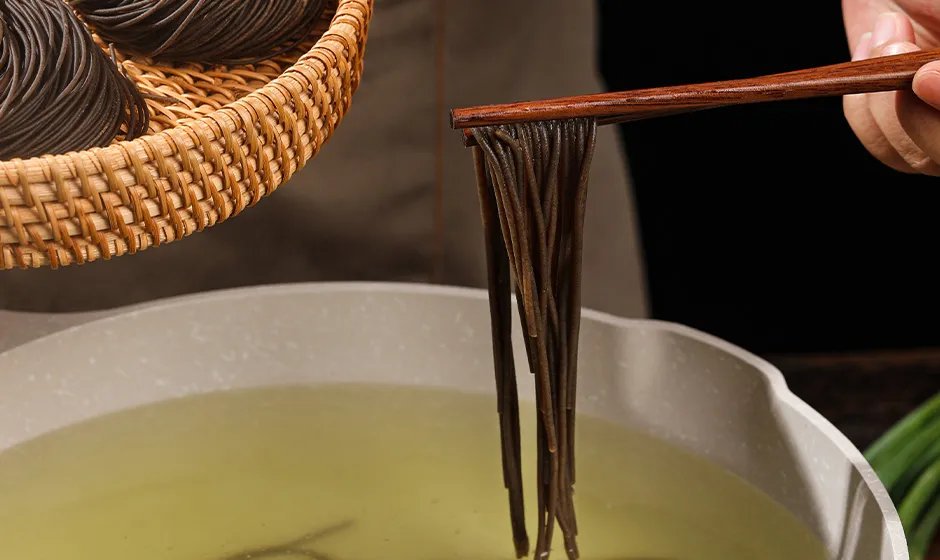Understanding the Key Differences Between Soba and Udon Noodles Explained
The Difference Between Soba and Udon Noodles
When it comes to Japanese cuisine, noodles are a staple that offers both texture and flavor. Among the diverse array of noodle types, two of the most popular are soba and udon. Although they may appear similar at first glance, these noodles are distinct in terms of ingredients, texture, cooking methods, and nutritional value. Understanding these differences can enhance your dining experience and culinary adventures.
Ingredients and Composition
Soba noodles are made primarily from buckwheat flour, which is what gives them their characteristic nutty flavor and darker color. Sometimes, wheat flour is mixed in to enhance the texture, but pure soba noodles contain at least 80% buckwheat. This unique ingredient makes soba a popular choice for those looking for gluten-free options, although it should be noted that not all soba noodles are gluten-free, as some brands may contain wheat.
In contrast, udon noodles are made from wheat flour, which gives them a smooth, chewy texture. Udon dough is often kneaded and allowed to rest to develop its elasticity before being rolled out and cut into thick strands. The result is a comforting noodle that is soft and has a more neutral flavor compared to soba.
Texture and Flavor
The texture of soba noodles is thin and delicate, with a slight chewiness. When cooked properly, they should have a firm bite, often described as al dente. The flavor profile of soba is distinctly earthy, with a nutty undertone that pairs well with both light and heavy sauces.
Udon, on the other hand, is thicker and heartier. Its chewy texture is satisfying in soups and stir-fries, where it absorbs flavors beautifully. Udon noodles are often enjoyed in rich broths or with bold sauces, making them a popular choice in comfort food dishes. While they do not have the same distinct flavor as soba, they serve as a wonderful canvas for a variety of ingredients and seasonings.
soba udon noodles difference

Cooking Methods
Both soba and udon can be prepared in a variety of ways, but they are commonly served in different styles. Soba can be enjoyed hot or cold. Cold soba is often served on a bamboo mat with a dipping sauce called tsuyu, making it a refreshing dish during warm weather. Hot soba is often served in a broth with various toppings like tempura, green onions, and mushrooms.
Udon is typically served hot in a flavorful broth, such as soy sauce or miso-based broth, or in curry udon for a spicy twist. Cold udon is also an option, but it is less common than cold soba. The warm broth complements the chewy texture of the udon, making it a beloved choice during colder months.
Nutritional Value
From a nutritional standpoint, soba noodles are generally considered healthier than udon. Buckwheat is high in protein, fiber, and essential amino acids, which can provide sustained energy. It is also rich in vitamins and minerals, making soba an excellent choice for those seeking healthier options.
Udon noodles, while still delicious, are primarily carbohydrates and less nutrient-dense compared to soba. They do contain some protein and dietary fiber, but their nutritional benefits are not as pronounced. However, the toppings and broth often served with udon can enhance the overall nutritional value of the meal.
Conclusion
In summary, while both soba and udon noodles are integral to Japanese cuisine, they offer different experiences in terms of texture, flavor, and health benefits. Soba noodles, with their unique buckwheat flavor and culinary versatility, present a lighter, nutty option for various dishes. Udon noodles, thick and chewy, provide a comforting, hearty choice that pairs well with more robust flavors. Whether you prefer one over the other or enjoy them both, exploring the differences between soba and udon can lead to a greater appreciation of Japanese culinary traditions. So next time you're planning a meal, consider trying both noodle types to experience the distinct qualities each has to offer!
-
Unleash Your Inner Chef with Delectable Italian Pasta CreationsNewsAug.01,2025
-
Savor Health and Flavor: Irresistible Soba Noodles for Sale Await!NewsAug.01,2025
-
Nourish Your Body with Premium Organic Ramen - A Culinary Delight AwaitsNewsAug.01,2025
-
Elevate Your Dishes with Our Exquisite Kinds of Egg NoodlesNewsAug.01,2025
-
Dive into Flavorful Convenience with Our Ramen OfferingsNewsAug.01,2025
-
Discover Exquisite Types of Naengmyeon and Chilled Soba NoodlesNewsAug.01,2025
-
Is Whole Wheat Pasta Healthy?NewsMay.30,2025
Browse qua the following product new the we

















































































































